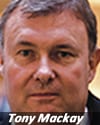A global exchange based on social networking principles will launch in the US and Europe next year, according to the project’s leader, former Chi-X Europe founding CEO Tony Mackay.
Speaking to theTRADEnews.com, Mackay said he planned to launch the new venture, known as MarketBourse, next year and that it would also offer the ability for banks and other institutions to base their own markets on his company’s technology.
“We will launch in the US in the first half of 2013, and Europe in the second half, with Asia after that, and we’re already talking to potential customers about 'exchange in a box' technology,” Mackay told theTRADEnews.com. “In the public markets we will limit the launch to equities and then roll out other asset classes such as options. For private markets, we can configure the 'exchange in a box' to trade any asset class from the start.”
The core idea behind MarketBourse is to let traders share trading information in circles of other market participants they select, similar to choosing friends on social networking platforms. The functionality would allow members to minimise market impact by selecting who they trade with.
“We will let the buy-side, sell-side and interdealer brokers create a circle of firms they want to do certain trades with, then send the orders to MarketBourse via FIX. MarketBourse will ensure the order is only exposed to the circles the client wants,” Mackay said.
The membership nature of the proposed venue would allow participants to lower the technology costs associated with searching for flow across different types of trading venue, while insulating themselves against predatory high-frequency trading strategies, according to Mackay.
Ready-made segmentation
The exchange in a box offering has been designed to give buy-side firms the ability to decide when they want to interact with proprietary and client flow from broker crossing networks.
“In many ways this is can act as a virtual broker crossing network - the bank or broker won't need to run their own crossing network as this will do it for them at a fraction of the cost,” Mackay said. “We are hoping that getting the 'exchange in a box' technology into some big financial institutions will help the roll out of the second phase where we go into non-equity products,” Mackay said.
Mackay, who was also the former CEO of agency broker Instinet's Asia and Europe businesses, gave a presentation last week at the TradeTech Architecture conference in Hong Kong, and said he was in the process of finalising financing with investors, some of which are Asia-based. He added that a US patent had just been approved for the technology that underpins the system.
“Our technology makes the market 3D in that users can configure what they see from other people and what other people see of them. Layer on top of that the ability to have the same order in multiple types of market – such as central limit order book, call and quote driven,” Mackay said.
Regulatory approval has not yet been sought by Mackay, who intends to wrap MarketBourse financing before submitting applications.
“We hope to have fundraising finalised in the next few weeks, so until then we won’t be putting in a formal application.
“In Europe, we’ll have the application in by the end of the year and we hope to launch around September next year,” Mackay said, adding that receiving US regulatory approval would be aided by a recent Securities and Exchange Commission to let the New York Stock Exchange run a retail-only venue.
Investment for the project will be divided into two stages, with initial financing supporting the launch and first few years of operations, before the second round.
“We’re trying to get a diverse range of investors in this phase which will provide financing through the US and European launch and then a second round will be open to end users who are participating in the exchange,” Mackay said.
The idea for the exchange was first mooted in April by Mackay to stem the trend of large buy-side firms and brokers creating their own internal matching engines, dark pools and crossing networks, which he believes are based on basic technology.
Last week, a similar venue called Squawker designed to allow sell-side firms to choose who they execute blocks with was announced for launch in Europe next year. However, Mackay said the regulatory categorisation of Squawker meant it offered a different proposition to MarketBourse.
“Squawker are setting up an interdealer broker, so they’re not taking on the regulatory burden of setting up an exchange, which is what we want to offer,” he said.
Squawker is currently set up as a broker because it matches counterparties, rather than matching orders. Following the introduction of MiFID II, Squawker plans to position itself as an organised trading facility, a type of trading venue created by the directive to capture new kinds of activity that is not suited to existing multilateral trading facility, exchange or systematic internaliser categories.
